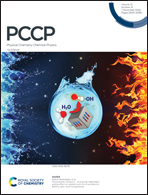Spotting aged dyes on paper with SERS†
Abstract
Surface enhanced Raman spectroscopy (SERS) is a highly sensitive technique for the non- or minimally invasive identification of molecules at very low concentrations. In this work, SERS is exploited using naked laser-ablated gold nanoparticles (AuNPs) for the detection of dyes on artificially aged paper inked with a ballpoint pen. Although several studies on inks with SERS are present in the literature, most of them report on the investigations on freshly prepared products, and less information is present on the detection of aged dyes and inks using SERS. Ballpoint inks are commonly used in daily activities, but have also been employed by several contemporary artists. These inks are very sensitive to light, and they discolor rapidly, making their detection demanding. In the present work, the SERS spectra of a ballpoint pen ink on two types of paper were analyzed after light-induced ageing, and the importance of the dye–AuNP interaction is discussed. The results show that the interpretation of the SERS spectra of the aged samples, such as those of interest in the Cultural Heritage field, is a tricky and delicate operation and that the diffusion of the dyes to the hot spot regions of the plasmonic nanoparticles plays a pivotal role in the detection of degraded ink components. Therefore, appropriate evaluation of the factors affecting the molecule–plasmonic nanoparticle interactions and of the history of the artwork to be analyzed is fundamental to avoiding the misinterpretation of the spectra and, consequently, of the original composition of the analyzed artwork.



 Please wait while we load your content...
Please wait while we load your content...